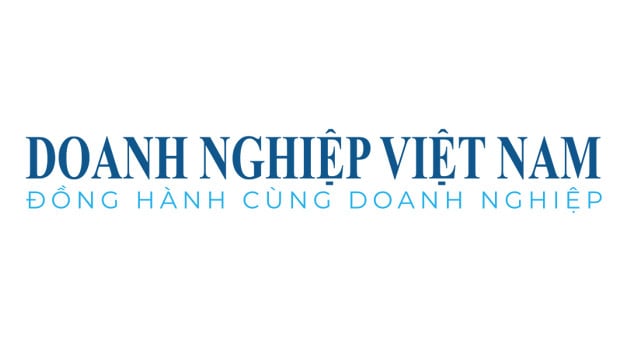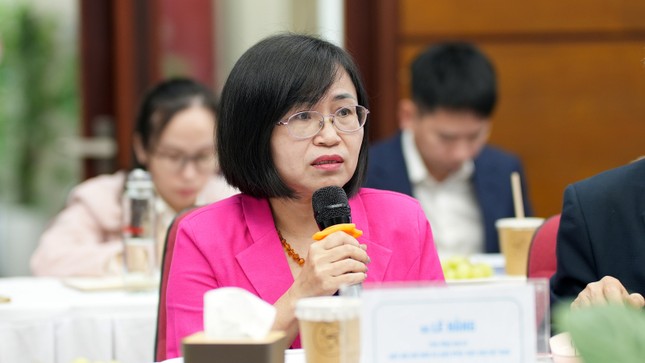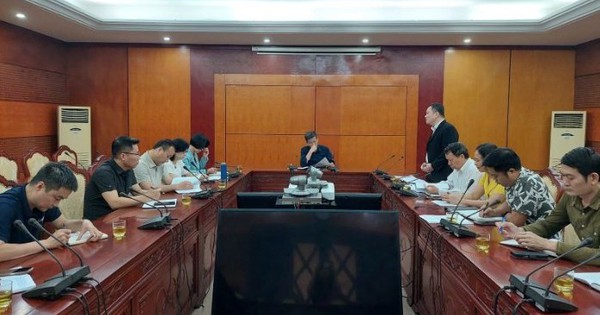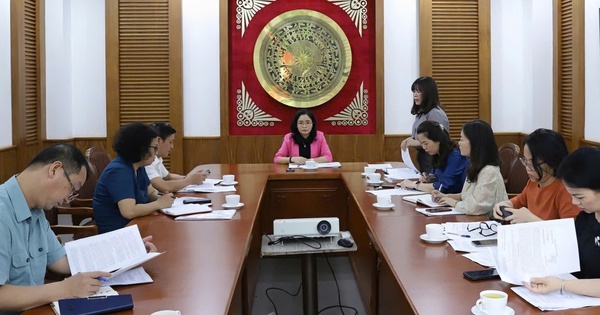Mr. Ngo Sy Hoai, Vice President of Vietnam Timber and Forest Products Association.
Worry and struggle
At the seminar "Responding to US counter-taxes" organized by Tien Phong Newspaper on April 8, Mr. Ngo Sy Hoai, Vice President of the Vietnam Timber and Forest Products Association (Viforest) said: "For the wood industry, since March 1, the US Department of Commerce has initiated an investigation, based on Section 232 of 1962 allowing the President to initiate investigations, impose taxes, and import quotas on goods that threaten US security. We have had to explain, argue, and hope that the tax will be applied at a low level. Taxes that threaten national security are usually 25%, currently, the wood industry must receive more information about counter-taxes", Mr. Ngo Sy Hoai shared.
Vietnam is currently the leading country in wood processing and exporting, after China. In the US, exports account for a high proportion of 38-40% of the total wood turnover, up to 9.4 billion USD. If from April 9, wood products to the US are subject to a tax rate of 46%, wood businesses will no longer have a profit margin. In 2024, the US will be the market consuming 56.4% of wood exports. Vietnam has exported wood to 161 countries and territories, the 5 largest markets include: the US, China, Japan, South Korea and the EU. Some Vietnamese businesses are having orders to serve higher segments such as participating in bidding to supply wood for palaces and high-end hotels, but this reality is not easy...", said Mr. Ngo Sy Hoai.
Faced with the imposition of a 46% reciprocal tax from the United States, many seafood businesses have stopped signing contracts and temporarily halted exports, which will result in them being fined for breach of contract. Seafood businesses are afraid of losing the US market, while this is the largest export market, especially for tiger shrimp, pangasius, etc. This market accounts for 1.8 - 2.1 billion USD in total export turnover of the industry, affecting the lives of millions of fishermen and seafood businesses.
Ms. Le Hang, Deputy Secretary General of VASEP.
Ms. Le Hang, Deputy Secretary General of the Vietnam Association of Seafood Exporters and Producers (VASEP), said: “At the time the US announced the tax, Vietnam had nearly 40,000 tons of seafood on the way to this country and businesses were worried, wondering whether these goods would be immediately subject to a 46% tax or not...?”.
According to Ms. Le Hang, Vietnamese seafood products exported to the US are not only subject to a 46% tax rate, but also subject to many other types of taxes such as subsidy tax, anti-dumping tax, etc., so the total tax payable is up to 75%. On the other hand, Vietnamese seafood enterprises often use the CIF delivery method, bearing all transportation costs, insurance and taxes before delivering goods to partners. Therefore, the new US tax rate has a direct impact on Vietnamese seafood exporting enterprises.
Mr. Hoang Manh Cam, Deputy Chief of Office of the Board of Directors of Vietnam Textile and Garment Group.
Textiles and garments are also the most affected commodity in the "basket" of goods. Mr. Hoang Manh Cam, Deputy Chief of Office of the Board of Directors of Vietnam National Textile and Garment Group (Vinatex), said that with a turnover of more than 16 billion USD, accounting for 35 - 40% of Vietnam's textile and garment export market share, Vietnam's exports to the US have increased steadily, from 2015 to present reaching approximately 6%.
In the short term, textile and garment exports to the US will decrease. Mr. Hoang Manh Cam expects that the negotiations between the Vietnamese Government and the US and the changes of businesses in the industry will minimize risks. Vinatex predicts that from the second quarter of 2025, orders to the US will decrease. "However, we are not too pessimistic because this time, the US imposes taxes on all countries. According to Vinatex's research, this time there will be less of a shift in the supply chain than the first time," Mr. Hoang Manh Cam predicted.
The Textile and Garment Association calculates that there are currently 7,000 - 10,000 textile and garment enterprises with over 2.5 million direct employees in the industry, not including related supporting industries.
Restructuring and repositioning the supply chain
Faced with tariff fluctuations, many opinions say that businesses need to strengthen Vietnam's export structure to have a more self-reliant and sustainable development strategy.
Economist Nguyen Quang Huy.
According to Mr. Nguyen Quang Huy, CEO of the Faculty of Finance and Banking (Nguyen Trai University), Vietnam needs a synchronous solution from businesses - Government - Industry associations to enhance high-level dialogue with the US; improve legal and technical capacity in handling trade defense lawsuits; support businesses to restructure supply chains, invest in technology, and diversify markets.
“Major countries, especially the US and EU, are using tariff and non-tariff tools to protect domestic production, supply chain security and control competition. Trade defense measures will be stricter, not only anti-dumping and anti-subsidy but also complex rules of origin. Vietnamese enterprises cannot resist passively, but must proactively shape long-term adaptation strategies,” said Mr. Nguyen Quang Huy.
According to this expert, some pillars of action to limit risks are: Standardizing and making the supply chain transparent; investing in digital traceability (blockchain, QR code, digital barcode) to prove legality, validity and clear domestic origin; clearly separating domestic materials and imported materials from countries with high risk of strong international trade conflicts with the US; registering trademarks, HS codes, and certification records from the beginning to be ready to provide evidence when investigated.
In addition, businesses need to improve their legal capacity and respond to trade defense. Businesses need to shift from 'low-cost processing' to 'high-value creation', escaping the model of relying on raw materials, low prices, processing... which can easily lead to accusations of dumping," Mr. Nguyen Quang Huy suggested.
Mr. Mai Son, Deputy Director of Tax Department.
From the tax authority's perspective, Mr. Mai Son, Deputy Director of the Tax Department (Ministry of Finance) said that the Tax sector has been proactive since the US administration changed its term. Based on the Government's macro management, the Tax Department has proactively proposed policies in recent times, creating momentum for the economy in general and domestic enterprises.
The Vietnamese government has proactively sought flexible trade solutions, not only with the US but also with other partners to ensure sustainable development in difficult circumstances.
The Government has issued Decree 73/CP on reducing import tax rates on many goods from major trading partners, including the US, with many tax lines at 0%. Accordingly, 16 groups of goods imported into Vietnam will have their taxes reduced, such as: Automobiles, agricultural products, coal, wood, etc. This is a great goodwill step from the beginning of the Vietnamese Government's efforts to balance the trade balance between the two countries, helping Vietnamese consumers increase their use of imported goods from the US.
To respond to the decision from the US and promote GDP growth, according to Mr. Mai Son, with FDI enterprises, the Ministry of Finance will strengthen inspection and examination, especially with signs of transfer pricing and relations with transit countries to avoid the situation of taking advantage of Vietnam's policy as a transit point to evade taxes.
“Building a shared database with the US Tax Agency, creating a basis for the two sides to effectively coordinate to prevent cross-border tax fraud. The Ministry of Finance has been assigned by the Central Government to develop a project on private economic development. We are researching to promote the private economy, focusing on two major areas: institutional policies and administrative procedures to support the business community,” said Mr. Mai Son.
Mr. Pham Quang Vinh, former Deputy Minister of Foreign Affairs, former Ambassador Extraordinary and Plenipotentiary of Vietnam to the United States: |
According to VNA
Source: https://doanhnghiepvn.vn/kinh-te/co-cau-lai-thi-truong-xuat-khau-minh-bach-chuoi-cung-ung/20250409085032800






























































































Comment (0)